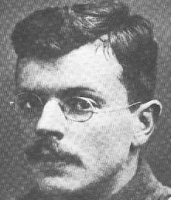 |
One of the most popular images
related to sports and WW1 (IWM) |
Several times we pointed out the varied link between Great War and Sport, discussing some of its different meaning or referring to some important athletes-soldiers. Now, a new conference, which has to be hold in Firenze in May 2014 under the title “Lo sport alla Grande Guerra”, aims to shed light on the topic. The organizers – Siss (Italian Society for the Sport History) and Sism (Italian Society of Military History) – wish to focus their attention on the Italian case-study, discussing the metaphoric value of sport as representation of the battlefield and its symbolic significance from the civil to the military perspective, and considering then also the broader European context. You can find below the CfP with some suggested topics which could fit the main interests of the conference, but also other related aspects concerning the connection of Sport and Great War are welcomed. Proposal can be sent till mid January 2014. Further information also here.
“Lo sport alla Grande Guerra" - Convegno di studi Siss-Sism – Firenze, May 2014
Siss (Società Italiana di Storia dello Sport) and Sism (Società Italiana di Storia Militare) propose a meeting to study the role of sport in the European culture during the First World War when sport found a major advantage for its change and growth. The Conference will be hosted in Florence in May 2014 to commemorate the 100th anniversary of the beginning of the First World War.
The aim of the conference is to share the deep relevance that sport had with the industrial revolution and the development of Italian society through its social and political metamorphosis. Just think of the growing interesting of Catholics and Socialists, who measure themselves against emerging sport, and even the obvious link with Gabriele D’Annunzio and the competitive spirit of his undertakings.
Sport by definition and origin seems to be the most appropriate instrument to deal with this important historical topic from the point of view of war and its effects, to hand on the great value of peace, as the Organizing Committee, created for the recurrence of this centenary, underscores
Furthermore internationalism is another of the fundamental features of sport, that gradually lead Italy, from a provincial reality to be in touch with belligerent and allied nations. Many heroes of the Great War were athletes who became soldiers. From a civil competitive spirit to barbarism of the fight, where boldness and athletic training were undoubtedly of great importance, thus a change of course happened as regards as to Ellias and Dunning’s interpretation (1986) of the sports field like metaphor of the battlefield. Sportsmen’s blood spilled during the First World War seems to demonstrate the opposite view, as if that sportsman was a “man of war, not only for physical preparedness, but also for the intense pleasure of the fight, that always makes a hero of him” (S. Giuntini, Lo sport e la Grande Guerra, SME 2000)
The Conference will be divided into four section, one of which for those 35 years old and under will deal with posters. The best poster will be awarded a prize.
Topics and suggestions:
1. Sporting events at the root of the Italian army’s evolution
2. From soldier-gymnast to soldier-athlete
3- Sports as heroism “who can deny that today la Gazzetta dello Sport is more useful to the Italians than ten cultural magazines […]?” (F.T. Marinetti 1915, Zanetti Lorenzetti s.d.)
4. Toward a European sporting identity
Deadline date:
1. a brief cover letter with a short description of yourself
2. a CV
3. abstracts should not exceed one page














